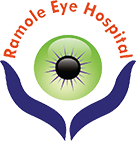Treatment for Glaucoma
The purpose of glaucoma treatment is to decrease IOP to prevent any eyesight loss. Usually, your doctor will start the treatment by prescribing eye drops. If those drops don’t work and more advanced treatment is needed, your doctor may recommend one of the following procedures:
Medications
Various medicines intended to decrease IOP are available. The medicines are available in the form of eye drops or tablets. Your doctor might direct you to take one of these types of medicines.
Glaucoma Surgery
If a blocked or partially obstructed channel is causing raised IOP, your doctor may recommend glaucoma surgery to create a drainage track for fluid or destroy the tissues that are responsible for the increased fluid. The treatment for angle-closure glaucoma is quite different.
The angle-closure glaucoma type of glaucoma is a medical emergency and requires immediate critical treatment to reduce eye pressure as swiftly as possible. Medicines are usually tried first, to reverse the angle closure, but this might also fail. A laser procedure termed laser peripheral iridotomy may also be done. This method creates small holes in your iris to allow increased fluid movement.
Don’t worry you are in safe hands. If you observe any slightest symptoms of this eye problem, please see the doctor as soon as possible. It may cost your eye sight if ignored.
1. Perimetry
Our visual world is composed of images of colors, textures, edges and contrasts. In addition, these images may be moving or flickering. The goal of visual testing is to quantitate of these functions.
Traditionally we have tested visual function as visual acuity and visual field Color vision testing, flicker sensitivity, contrast sensitivity, pupillary responses and motion testing are some of the other methods of quantitating vision.
Perimetry is the systematic measurement of visual field function. The two most commonly used types of perimetry are Goldmann kinetic perimetry and threshold static automated perimetry. With threshold static automated perimetry, a computer program is selected. This is accomplished by keeping the size and location of a target constant and varying the brightness until the dimmest target the patient can see at each of the test locations is found. These maps of visual sensitivity, made by either of these methods, are very important in diagnosing diseases of the visual system. Different patterns of visual loss are found with diseases of the eye, optic nerve central nervous system.
2. Pachymetry
The instrument used for this purpose is known as a pachymeter. pachymeters are devices that display the thickness of the cornea, when the ultrasonic transducer touches the cornea. Newer generations of ultrasonic pachymeters work by way of Corneal Waveform (CWF). Using this technology the user can capture an ultra-high definition echogram of the cornea.
3. Gonioscopy
Gonioscopy is performed during the eye exam to evaluate the internal drainage system of the eye, also referred to as the anterior chamber angle. This is the location where fluid inside the eye (aqueous humor) drains out of the eye and into the venous system. A special contact lens prism placed on the surface of the eye allows visualization of the angle and drainage system.
4. Trabeculectomy /Ologen
Trabeculectomy is the gold standard procedure for the surgical treatment of glaucoma. Antimetabolites such as mitomycin-C (MMC)are widely used as an adjunctive during surgery to prevent scarring of the bleb.
Recently, a biodegradable porous collagen-glycosaminoglycan copolymer matrix implant (Ologen), has become available for glaucoma surgery. prospective intervention pilot study to determine the degree of intraocular pressure (IOP) lowering of trabeculectomy with Ologen implantation in comparison to trabeculectomy with MMC. hypothesis that trabeculectomy with Ologen will be a safer procedure than trabeculectomy with MMC, but probably at the cost of a less potent IOP lowering.




